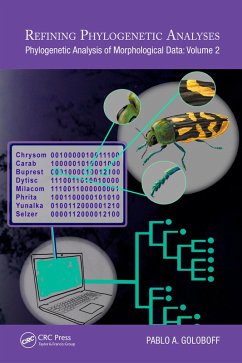This volume discusses the aspects of a phylogenetic analysis that go beyond basic calculation of most parsimonious trees. Practical application of all principles discussed is illustrated by reference to TNT, a freely available software package that can perform all the steps needed in a phylogenetic analysis.
Dieser Download kann aus rechtlichen Gründen nur mit Rechnungsadresse in A, B, BG, CY, CZ, D, DK, EW, E, FIN, F, GR, HR, H, IRL, I, LT, L, LR, M, NL, PL, P, R, S, SLO, SK ausgeliefert werden.
"There is no question that Goloboff provides a rigorous, logical and analytically sound framework for analyzing data - probably the most carefully considered rationale that has ever been published for phylogenetics of any kind of data ... "
- Andrew Brower, Assistant Director at USDA Animal and Plant Health Inspection Service (APHIS)
"... this book is focused on phylogenetic analyses based on morphological date [and] paleontologists will find its content particularly useful. ... provide[s] both researchers and students alike with the theoretical bases and tools for the correct building of robust phylogenetic data matrices, their analysis, and subsequent interpretation. [this book] will become a 'must-read' ..."
- M. D.Ezcurra in Ameghiniana, 2024, vol 61 (1).
- Andrew Brower, Assistant Director at USDA Animal and Plant Health Inspection Service (APHIS)
"... this book is focused on phylogenetic analyses based on morphological date [and] paleontologists will find its content particularly useful. ... provide[s] both researchers and students alike with the theoretical bases and tools for the correct building of robust phylogenetic data matrices, their analysis, and subsequent interpretation. [this book] will become a 'must-read' ..."
- M. D.Ezcurra in Ameghiniana, 2024, vol 61 (1).









